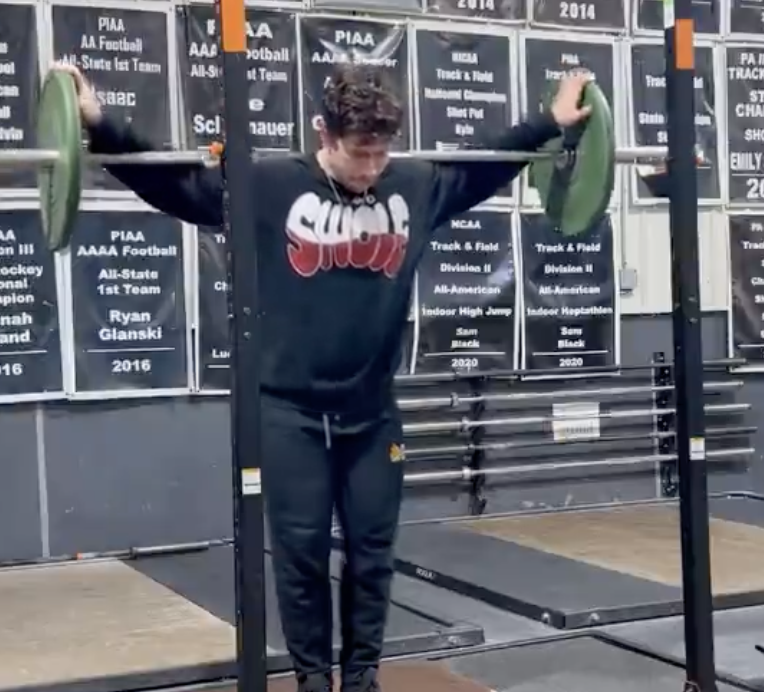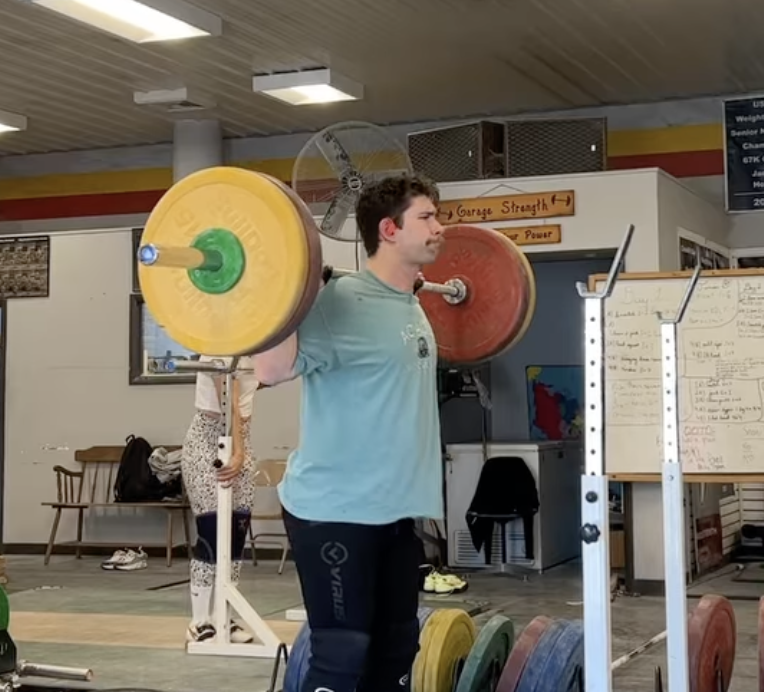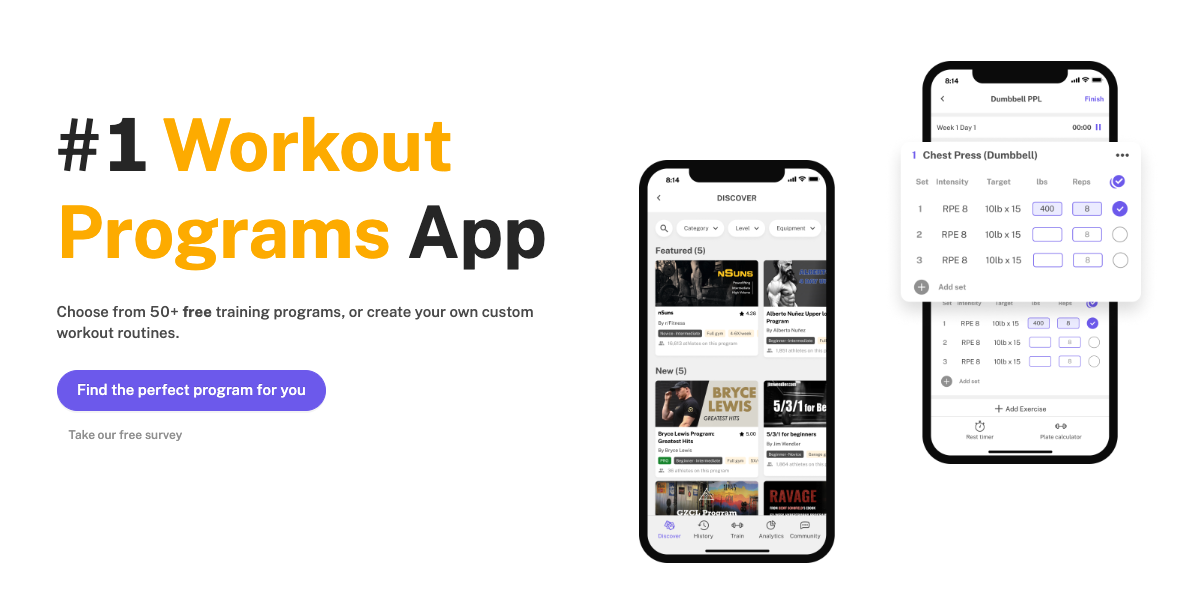High Bar vs. Low Bar Squatting: What is Best for Gains?
Which version of squats is more effective for gains?
A staple exercise of many lifters’ leg days is the barbell back squat. Whether you are a powerlifter or a bodybuilder, this classic compound exercise is good for building strength, size, power, or whatever your fitness goals are. That being said, you will see squatting in just about anyone’s lifting program, but there are different variations of the barbell back squat that can be done. Two of the most popular variations of the barbell squat are high bar and low bar squats, and though the bar position may not seem all that important, it has a huge effect on where most of the load is placed and what you get out of the lift.
That being said, let’s take a look at the similarities and differences between high and low bar squats, and break down what is best for you.
What is a High Bar Squat?

A high bar squat is a back squat where the barbell sits high on the trapezius muscle across the top of the shoulders. The foot stance is the same, with feet shoulder width apart and pointed slightly outward.
Keeping the bar over midfoot is how the lifter can remain balanced throughout the movement. Another key thing to note is when you place the bar high on the back, it requires the lifter to be in more of an upright torso position and forward movement of the knees to descend properly into a squat position. This style of squatting also places a lot more of an emphasis on the quads.
Benefits of a High Bar Squat
One of the main benefits of the high bar squat is that it places a larger emphasis on the quads, as stated above, meaning it is an appropriate exercise to do if you’re looking to gain strength and muscle mass in your quadriceps. Many bodybuilders will use this method of squatting to add to the muscles on the front of the thighs. It is worth noting that if you are doing a high bar squat, you may need better ankle mobility, as the knees will move further past the ankles to get into a squat position.
Another benefit of the high bar squat is that it tends to place less stress on the lower back and is easier to stay balanced throughout the whole movement than in a low bar squat, as the bar is naturally over the midfoot from the start.
What is a Low Bar Squat
On the flip side, a low bar squat is a variation of the barbell back squat in which the bar is placed lower on the upper back than a high bar squat. In this movement, the barbell should be resting on the posterior deltoid, not the top of the shoulders and traps. The feet are also shoulder-width apart and turned slightly out for this move.
Just like the high bar squat, it is important to stay balanced and keep a straight bar path over the midfoot, you must immediately bend slightly at the hips when you are getting into this movement. This causes a more forward lean with the torso during the movement to prevent falling backward. The low bar squat also places a greater emphasis on the glutes and hamstrings.
Benefits of a Low Bar Squat
Now, one of the main benefits of the low bar squat is that it can greatly enhance strength and size and the glutes and hamstrings, making it a great exercise for those looking for bigger legs, and those who compete in powerlifting as the glutes and hamstrings are responsible not only for the squat, but a deadlift lockout. Also, typically a lifter will be able to move more weight on the low bar squats, due to the fact that more muscles are being recruited on the movement.
It is worth noting that with the low bar squat there is a bigger emphasis on the posterior chain as a whole. That being said, it also puts a bit more stress on the spine, so if you go too heavy or use improper form you are at great risk for injury. The low bar squat is great for someone looking to maximize their strength gains.
Also, a low bar squat may be good for those with limited ankle mobility. This is because the knees don’t have to move in front of the ankles quite as far, decreasing the angle of flexion.
So is a Low Bar Squat Better Than a High Bar Squat?

When it comes to comparing these two very popular styles of squat, you have to take a step back and truly evaluate what you want out of your fitness journey. While each style caters to different demographics, both styles of squats are great, for different goals. For example, if you are looking to build power and increase strength in other exercises like power cleans and snatches, or pack on more muscle mass in the quads, then a high bar squat may be the best option for you.
On the flip side, if you are someone that is looking to build the muscles of your posterior chain, increase your one rep max, compete in powerlifting, and challenge your balance and core strength, then a low bar squat could be the option that you should go with.
A major disadvantage of the low bar squat is that it may require more shoulder mobility, as well as put more stress on the wrists and elbows, as the bar is lower so you are relying more on your wrists and elbows to keep it in place. That being said, if you do not have the mobility or flexibility to get into the proper position for a low bar squat, then you are at a higher risk of injury.
The bottom line is that you need to assess your goals and what you want to achieve in order to choose what type of squat you want to go with.
Programs for Squatting
In order to progress on your squats, finding a good workout program to help guide you is key. Keep in mind that good programs will help with your fitness journey, you would want to find a program that caters to your needs and guides you in the right direction, making sure that you are making the most gains. If you are looking to stay on track and continue with linear progression, then finding a good workout program is the key. Where do you look for a good workout program? Check out the Boostcamp App for some great programs.
Boostcamp is home to over 50 FREE workout programs that consist of strength, hypertrophy, or functional fitness, or both, from the push pull legs program all the way to upper lower, there are so many programs to choose from that can help fit your needs. However, with Boostcamp, you don’t have to just follow a pre-written program (although each program is written by a professional), you also can create your own program as well, and track your progress to make sure you are on the right track. That being said, when you are looking to incorporate some serious training to further your progress on the squat, then check out Boostcamp.
High Bar vs. Low Bar Squats Wrap Up
Overall, high bar and low bar squats each have their own benefits and drawbacks. You need to assess what your goals are and what you want to achieve, and then pick which style of squat you want to do from there.
What is your favorite way to squat? Let us know, and be sure to follow Boostcamp on Instagram and subscribe on YouTube!
